The Basic Guide to Metal Bending Machine
There are many different types of metal bending machines, and they are used in different ways. The data can be adjusted to meet the various bending requirements. In the following, we will discuss the various common bending machine problems.
- Chapter 1 What is a metal bending machine
- Chapter 2 Materials for Metal Bending
- Chapter 3 The main types of metal bending machines
- Chapter 4 Applications of metal bending machines
- Chapter 5 Sheet metal bending methods
- Chapter 6 Sheet metal bending allowances
- Chapter 5 Composition of the bending machine
- Chapter 6 Metal bending machine recommendations
- Chapter 7 How do metal bending machines work?
- Chapter 8 Quality checks before delivery of Gwk
- Chapter 9 What are the safety precautions?
- Conclusion
What is a metal bending machine
A metal bending machine is a large machine that uses jigs to hold and bend metal to various angles, such as right angles, non-right angles, and circular arcs. Most metal devices with bending angles are done using machines such as window frames, water pipes, metal railings, etc.
The bodies and clamps of metal bending machines are made of unique designs and materials to ensure that the material is not damaged during the bending process.
Materials for Metal Bending
Metal bender machines can bend malleable metals such as stainless steel, carbon steel, aluminum, copper, iron, and alloy materials.
The main types of metal bending machines
There are many metal bending machines, including pipe bending machines, ring bending machines, knee bending machines, wire bending machines, hydraulic bending machines, CNC bending machines, metal bending rolls , eagle bending machines, etc. Next, the 2 types of metal bending machines are described.
Steel bending machine/pipe bending machine
This type of bending machine is used in a wide range of applications and industries. The machine mainly holds the sheet metal in place using clamps and then uses a punch to bend the metal to any angle.
Pros:
- Precise bending angles, high productivity
- Suitable for handling large workpieces
Plate rolling machine
Metal bending achieves by fixing the rollers l using hydraulic cylinders.
Pros:
- Suitable for bending rounded sheet metal
- Low-cost price
Applications of metal bending machines
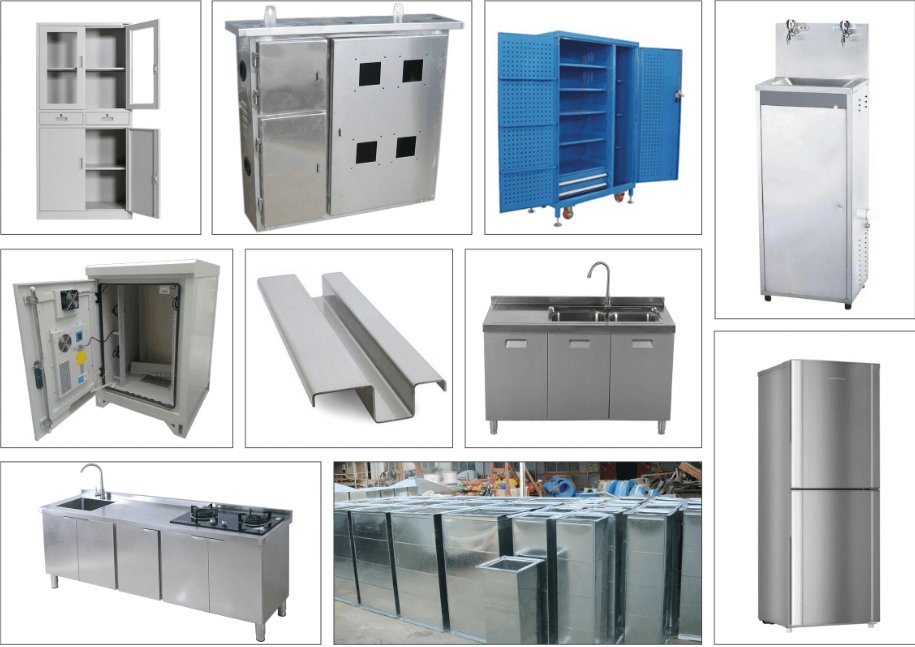
Many products in life use bender technology:
- Train rails
- Fencing
- Window and door frames
- Fitness equipment
- Hydraulic systems
- Sewer pipes
- Parts for automobiles
- Furniture industry
- Medical equipment
- Cabinets
Sheet metal bending methods
There are many different ways of bending sheet metal, and different bending methods are used to shape different effects. A few of the commonly used bending methods are listed below.
V-bending
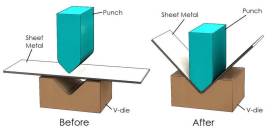
This is the most common way of bending. We need to choose the angle of the bend and then set the right punch pressure. This method is simple and quick and is commonly used for most sheet metal bending. V-bending is divided into the following types.
 Bottoming
Bottoming
Undercutting means that the punch compresses the sheet metal to the very bottom of the template to create a pre-determined angle. The bent metal will not spring back, and the die's angle determines the sheet metal's bending rise.
Im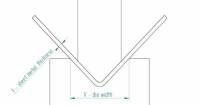 pressions
pressions
This is also a high-precision bending method where we control the angle of the bend by setting the pressure of the punch. This method is the same as priming. The metal is bent at a precise angle and does not spring back.
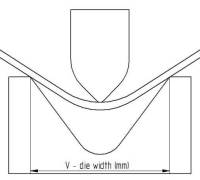 Air bending
Air bending
This is a less precise type of bending, the simplest type of bending in V-bending. However, it does not require the assistance of a die, so it is often widely used because of its ease of operation. However, the most significant disadvantage of this bending method is that the metal tends to spring back after bending.
 Roll bending
Roll bending
Roll bending uses the distance between the three rollers to create the curve you want. This method suits bending rounded products, such as water pipes, cylindrical frames, and vertebrae.
U-bending
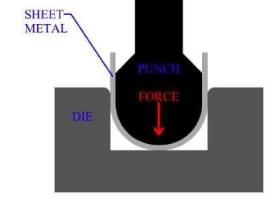
The U-shaped and V-shaped metal bender machines work on the same principle. The only difference between the two is that the bending shapes turn differently.
Wipe bending
This is a more complex bending method in which we need to push the metal onto the correct wiping die and then determine the inner radius of the bend in the sheet metal. Using a metal bender machine to complete this process may scratch the surface of the metal.
Rotary bending

This bending method of the sheet metal bending machine is suitable for the production of sharp corners. Metal bending machinery allows precise bending while protecting the surface of the material.
Metal bending machinery technology sample
Sheet metal bending allowances
The bending allowance is the length of sheet metal material that needs to allow in the bend for it to bend to the correct size. There is pressure and tension at the bend as the sheet metal moves from flat to bent, and this difference in force causes the total length of the metal to change. Therefore, we need to calculate the sheet metal's total length based on the sheet metal's bending allowance before bending.
Composition of the bending machine
The main components of the metal bending machines sold on the market are divided into 4 parts.
- Cutter
High precision and automatic bending - Servo motor
Fast and quick heating up for better machine operation - Rail
Straight rails reduce friction and are more durable and stable in use. - Center system
Support ether cat high-speed bus and easy 2D drawing.
Metal bending machine recommendation
GKS-BC3015
| Sheet length | 1600MM |
|---|---|
| Sheet width | 1250MM |
| Maximum thickness of metal plate/ sheet | Carbon steel1.5mm/stainless steel 1mm/aluminum 2mm |
| Up and down tool distance | 175mm |
| Bending angle | 0-180° |
| Bend height | 170mm |
| Cnc system | NLKER |
| Minimum forming size on all four sides | 320*200 |
| Operating system | LINUX |
| Maximum continuous bending speed | 0.2/Bend time |
| Machine weight | 8T |
| Sucktion cup size | 190*130mm |
| Minimum arc radius | 1.2mm |
Pros
- High efficiency
High efficiency, maximum continuous bending speed 0.3 s/time - Save labor
The suction cup lifting device ensures that the machine can change the material automatically, saving labor in fully automatic operation. - Safety
No manual loading is required, making the whole process safer - Easy to operate
The machine can be operated independently with just a short video instruction, which is very easy to follow.
Gwk quality checks before shipment
All of Gwk's steel bending machines are quality checked before shipment. Our quality check process is approximately as follows.
- All machine parts are ultrasonically cleaned thoroughly before assembly
- Each part is lubricated and maintained and assembled precisely according to procedures
- After assembly, the machine is tested for performance
- After testing, the machine's wiring and power supply are further checked
- Final adjustment of the upper and lower knives, table suction cups, etc.
- Packing
How do metal bending machines work?
GWeike manufactures welding machines such as knee bending machines, metal bender machines, and metal bending rolls. Below is the GWeike metal bender machine - GKS-BC 3015 Automatic Panel Bending Machine.
What are the safety precautions?
Although the vast majority of steel bending machines are now highly automatic, safety precautions still must be taken during use:
- Wear personal protective equipment, including goggles, helmets, gloves, and other protective equipment.
- Read the complete manual and understand the function of each button on the machine before operating it
- Do not approach the workbench during operation and stand in a safe area
- Keep the sheet metal surfaces as clean and dry as possible and avoid large amounts of oil and grease
- When using in cold environments, turn on the machine in advance to warm it up
Conclusion
Metal bending machines are powerful and have a wide range of applications. If you have questions about the machine's price, model, or scope of use, you can contact our online customer service directly. We will be happy to answer all your questions about metal bender machines.

